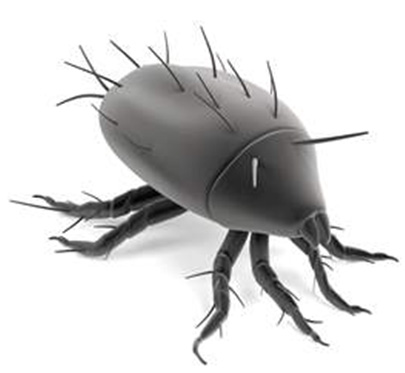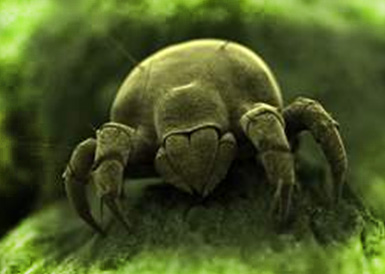Mites

There are thousands of different types of mites found throughout the world, such as bird mites and clover mites. Mites are considered arachnids, just like ticks, but mites are smaller in size. In fact, most types of mites are less than 1 mm in length. Mite identification is key to eliminating an infestation.
Some parasitic mites attack animal hosts, while others reside within the respiratory tracts of their hosts. A few types of mites, such as chiggers, can also transfer diseases to humans.
House Dust Mites Dermatophagoides farina

House dust mites have received much attention in the early 1990s and again recently. The house dust mite is nearly impossible to see without magnification and is named for the fact that they feed on dead skin shed by humans as well as other protein materials.
The most common area for finding mites is in the bed due to an abundance of dander. House dust mites may also be found in living areas especially carpet, furniture, and clothing.
People may be allergic to house dust mite cast skins and droppings. These reactions will not be a rash type of reaction but rather a respiratory constriction, a common symptom of asthma. Itchy, watery eyes may also be symptoms. Approximately 50-80% of asthmatics may have symptoms due to house dust mites.
House Dust Mite Prevention
- Frequently change bed linens. If house dust mites are a serious problem, mattress encasement with a cover tested for house dust mites may be helpful
- Vacuum areas frequently using a HEPA filter vacuum
- Keep humidity low when possible; heating or freezing infested fabric may help
- If asthmatic, avoid playing with children or animals in a carpeted area
Contact Entotox office in your region for pest management and extermination plan.


